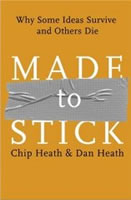Our company works with banks to underwrite commercial real estate loans for their borrowers. The majority of our marketing efforts are integrated with our sales team — who works diligently to build and keep relationship with our client banks. From a marketing standpoint, we communicate with clients through a monthly newsletter, DM, collateral, etc. I recently heard from a few clients – who apparently are not reading our newsletters — that they didn’t know about the most recent developments in our company. What are some fresh, successful, and cost effective marketing mediums for staying in front of our clients so we can maintain/grow our company presence and remain top of mind?
###
When you have something of note – host a luncheon for your bankers.
If they aren’t reading your newsletters – find out why. Is it the content? Format? Appearance? If you move to e-newsletters (which will probably save you money and allow you to send out “flash” notices), you could easily suffer the same problem – your marketing gets ignored or labeled as spam.
What is your competition doing? You don’t want to necessarily copy them, but you do want to make sure you’re not missing something obvious. To find out, take a banker to lunch and find out what’s the best way to get their attention, when, etc.

 Let’s say that business is slow, so you want to market a new product you’re selling. How can you get the word out “yesterday” and get measurable results?
Let’s say that business is slow, so you want to market a new product you’re selling. How can you get the word out “yesterday” and get measurable results?